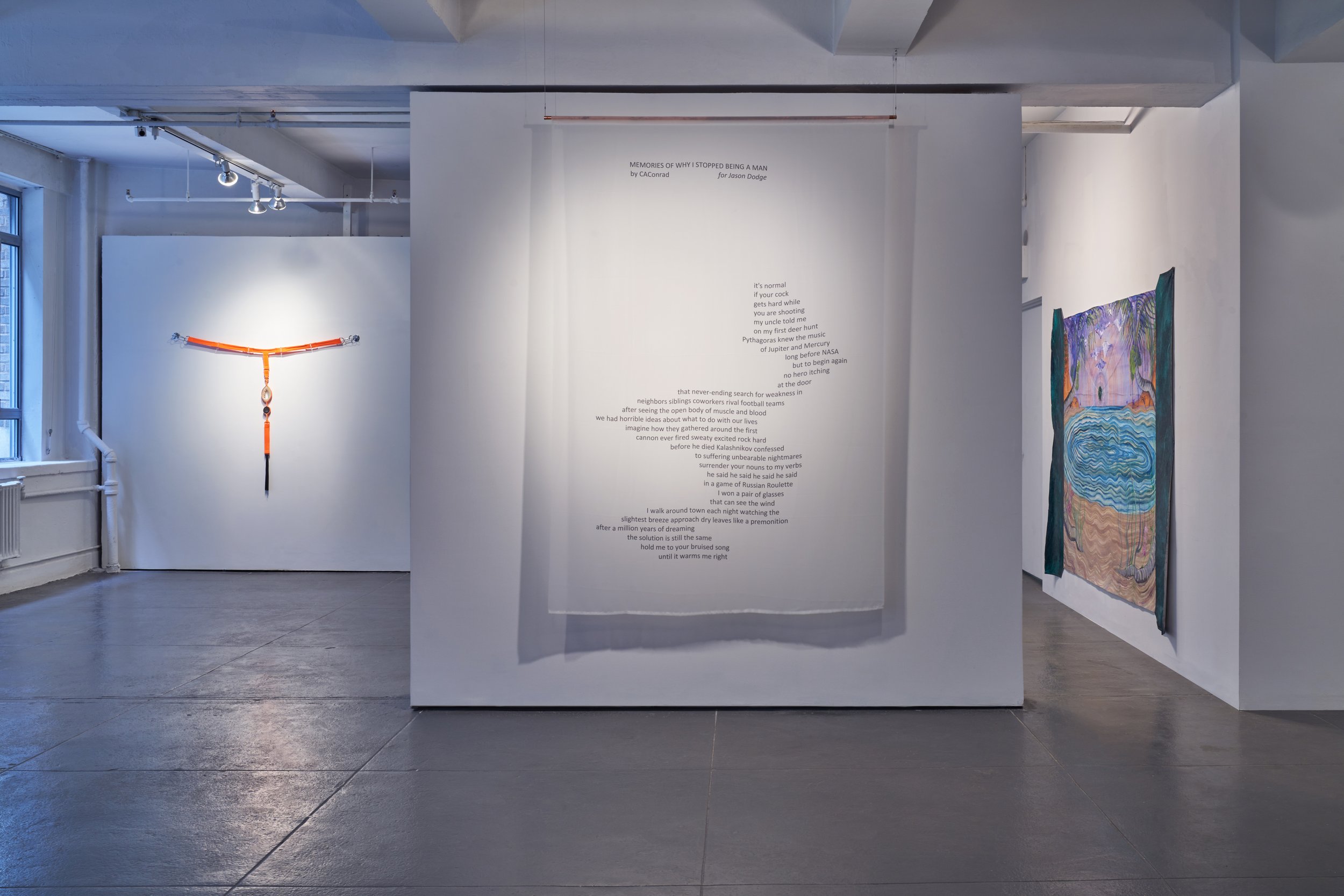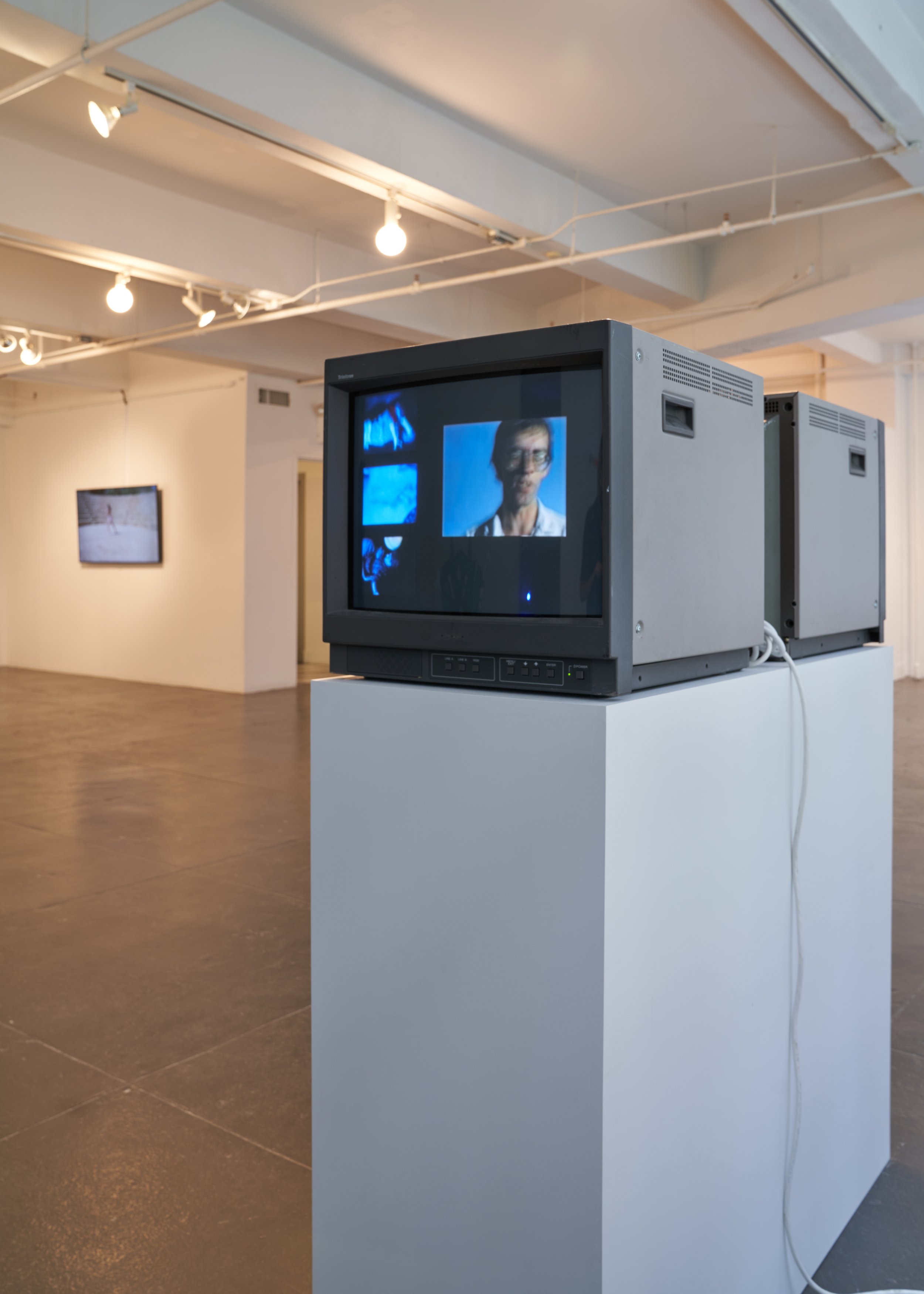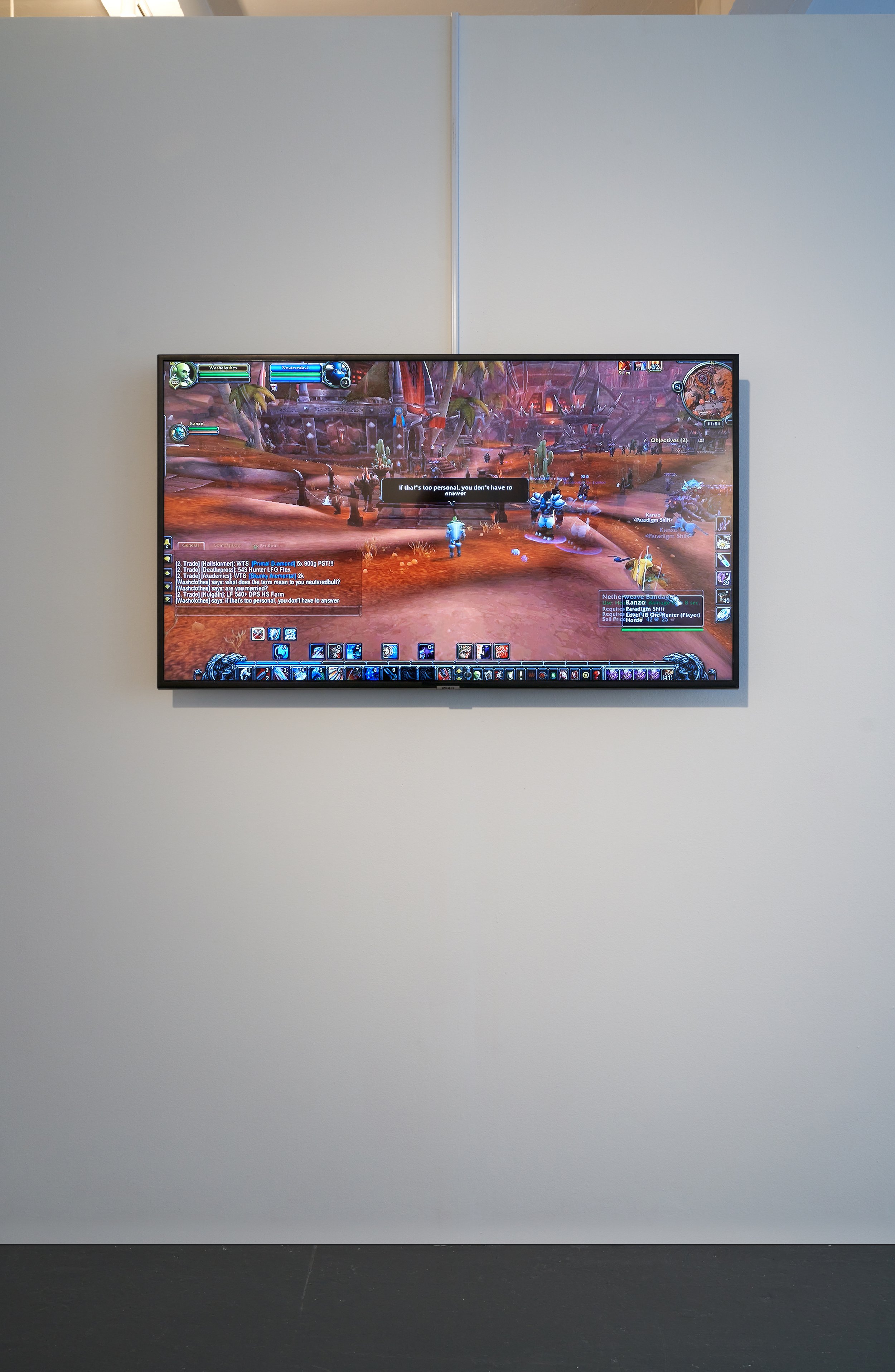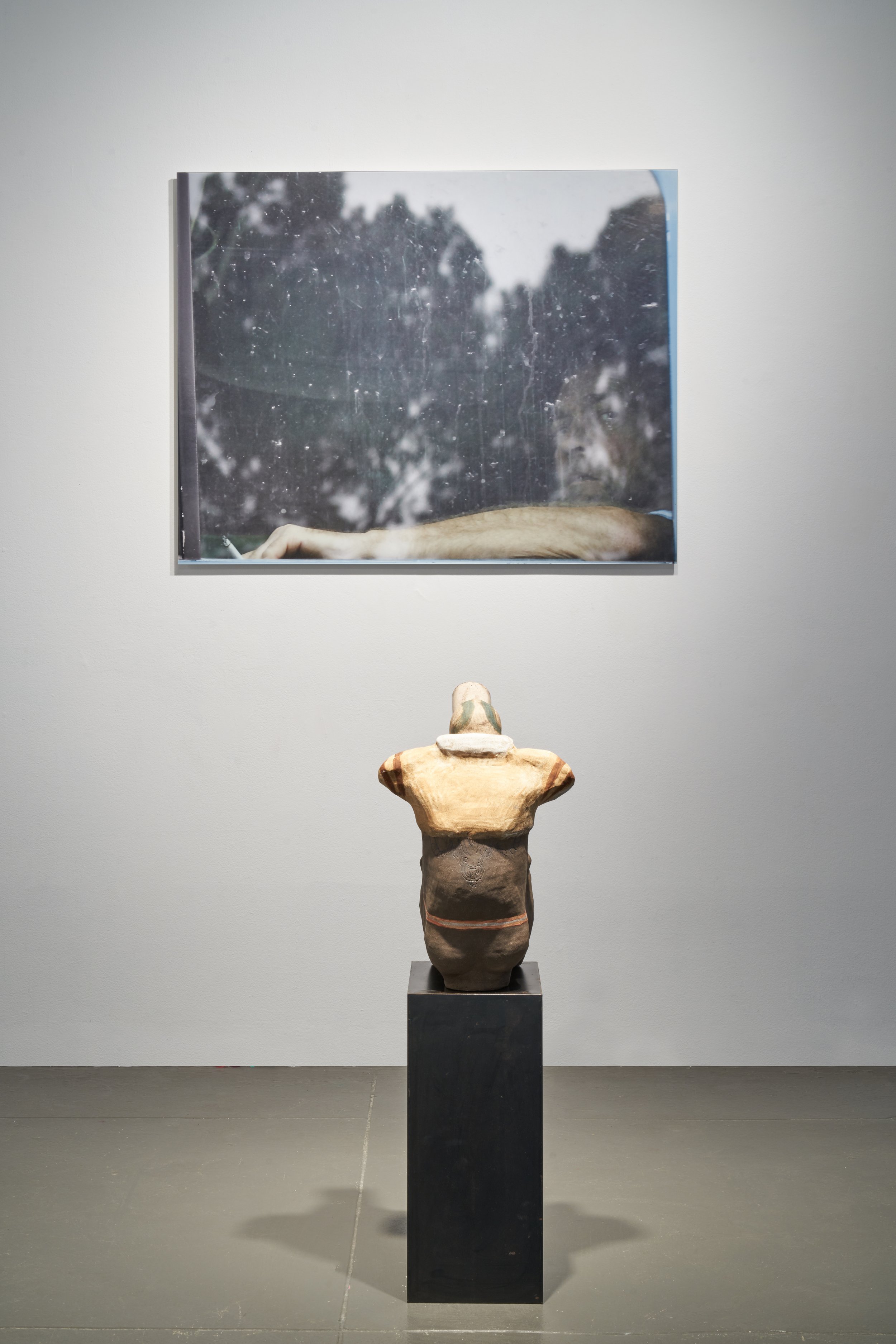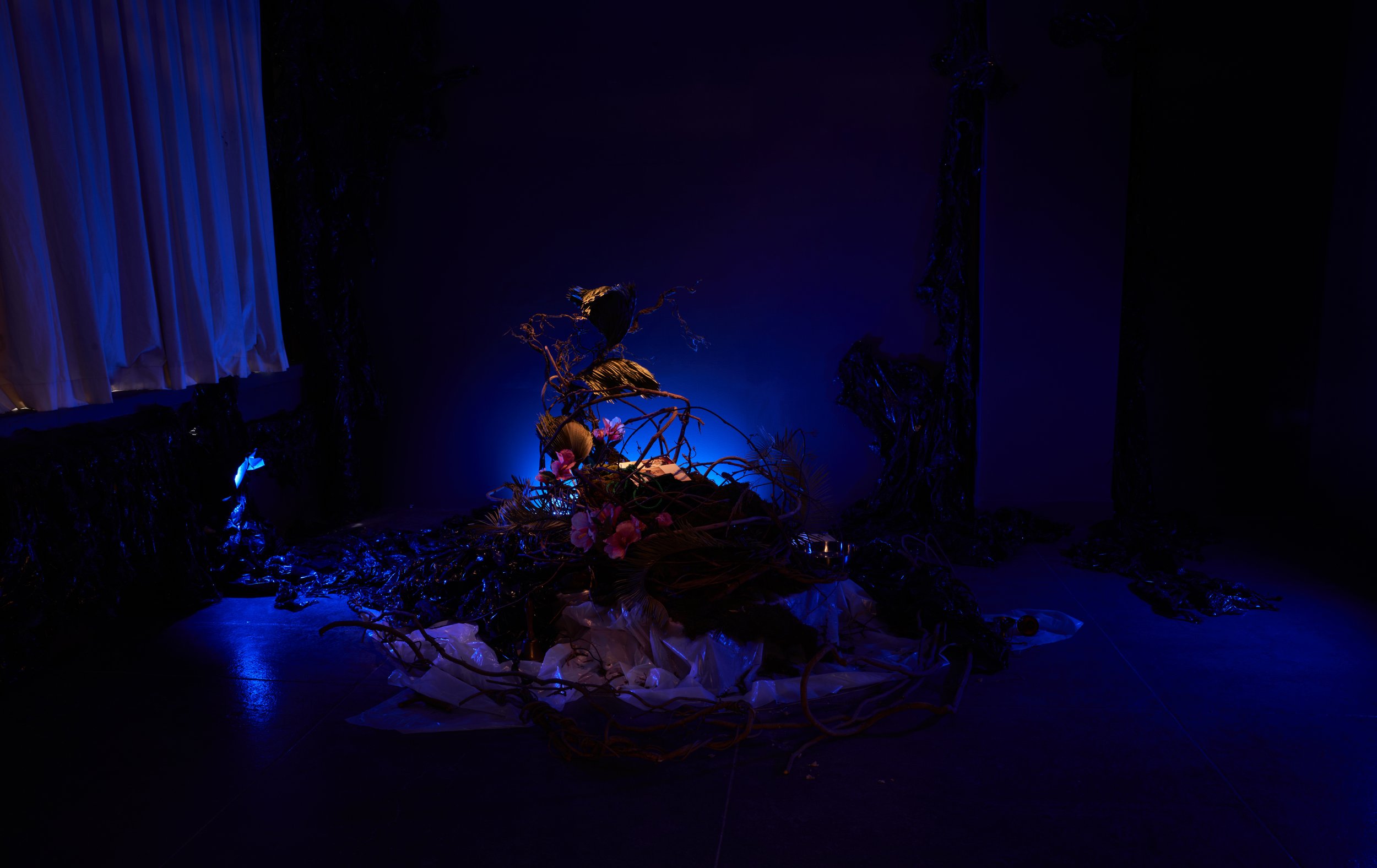BOY BOX
EFA Project Space
July 30 - August 28, 2021
Jared Buckhiester
CAConrad
Deborah Czeresko
Karen Yvonne Hall
BB Kenda
Rose Nestler
Sarada Rauch
Marion Scemama and David Wojnarowicz
Vincent Tiley
Christopher Udemezue
Angela Washko
For the purposes of this exhibition, masculinity is defined as a constructed and perceived set of traits as evaluated by a cis-dominated, colonized Western culture, in which masculinity is imposed from external perspectives, and translated into individual performances across the gender spectrum. BOY BOX optimistically proposes broader access to the joys and benefits of fluid, detachable masculine traits. The exhibition is not an astigmatic celebration of maleness, but rather a deconstruction of masculinity’s history of power, and a rejection of its stigma, one that has fueled racism and the marginalization of people who do not conform to binary constructions of gender. Addressing the hypocrisy of a masculine archetype that, in Western culture, is reserved for white cis-male people, this exhibition aims to complicate and bend masculinity across intersections of identity. To those ends, BOY BOX aims to carefully bring the fragility and preciousness of masculinity down to earth, catching it as it falls from its cultural pedestal. On view are artworks that address masculinity’s myriad iterations, frustrating ideas of gender, the male sex, and toxicity.
The United States’ surge of mass killings in recent years evinces the damage wrought by the Western tradition of violence as a masculine craft. Where research into the causes of mass violence is inadequate, an observable commonality is that most perpetrators are male-identifying. Meanwhile, modern sensibilities replace and flip archaic gender roles. Heterosexual romance, for example, is the old-fashioned process of quieting hyper-masculine impulse in order to sweeten and garner interest from a prospective sexual partner. This cloak to accessorize the performance of masculinity is a forefather of what we now call consent.
Download a PDF of the exhibition catalog from EFA Project Space
Images courtesy of Meta Meta LLC.
Working to move outside its conventional constraints, this exhibition offers a group of artists’ observations and performances of masculinity. Their work shows that we each have not only a unique relationship with the masculine, but a right to its power, swagger and strength.
CAConrad’s knife-shaped poems are unapologetically distilled from somatic rituals that have been honed over years of coping with trauma born from anti-gay violence. Their work for this exhibition, which opens with an anecdote of the gun as phallus and the phallus as hero, touches on the history of the AK-47 and ends on a note of solitude and longing.
Jared Buckhiester makes an offering to each subject of his clandestine photography––truck drivers ostensibly without a pot to piss in––: a portable ceramic urinal. The project is imbued with voyeurism and regret, as Buckhiester’s father drove him down the highway to pursue his aim of capturing truckers just as they noticed his gaze; a moment placing the artist between threat and threatened. Then, feeling he overstepped a boundary, Buckhiester made each driver their gift.
Deborah Czeresko’s chromed tailpipe of blown glass, disembodied from the undercarriage of its vehicle, ejects a silky-white glass glob of smoke. Not shown is another Czeresko work, a glass uterus that can augment a sans-uterine body. This utopian object of postgenderism supposes a world wherein the female reproductive system is not the only possible place for pregnancy and childbirth, and is therefore a mechanism for disrupting traditional gender roles.
Karen Yvonne Hall is a trained opera singer as well as a drag performer, and their interests find overlap in the figure of the castrato whose prepubescent singing voice is preserved through a disruption of the endocrine system, namely castration. For BOY BOX, Hall—as their drag persona Daren—dresses as their father to perform Soy Carlos, a song they wrote from their father’s point of view. The song describes Carlos’ experience being a sensitive soul living in the Dominican Republic, where his femininity was a mortal threat.
BB Kenda addresses drag and gender fluidity as well, performing in a video that seems private, with the wall so close to their back they could be in a bedroom closet, and an intimacy that reminds of a teen singing into the mirror. BB contrasts a pop song, about the protagonist with their husband, with BB’s own performance of a bifurcated identity, making the protagonist-antagonist relationship an internal one.
Rose Nestler anthropomorphizes objects by applying gender-specific body parts; sexualizing business suits with fabric bosoms. For BOY BOX, Nestler presents a comically green tool bag with appendages she calls Barbie legs. The piece is as brassy as a bosomy aunt with the utility of a sitcom handyman. Just as bright, but more austere, is Open Lock, a chastity belt of orange faux leather with a stone-toothed mouth.
Sarada Rauch connects antiquity with the Mr. Olympia body-building competition, having traveled to Archanes, north of Heraklion, Crete, and filmed themself flexing Mr. Olympia-style in an ancient Greek amphitheater built on top of a Minoan burial ground. Sports have emerged in other BOY BOX artists’ works as a masculine space, an arena for playacting battle that foregrounds competition and physical condition.
Marion Scemama and David Wojnarowicz collaborated on several Super 8 video works in the late 1980s. The two pieces on view represent polar possibilities of opposition to masculine dominance. What is this Little Guy’s Job presents a quiet moment of speculation on the gentle creatures of the earth, while Last Night I Took a Man is a manifesto on mass death caused by homophobic hatred. Wojnarowicz combated homophobia on the front lines of the AIDS crisis in the 1980s and 90s. His adversary was the ancestor of “toxic masculinity:” a pervasive cultural hatred born from conformist attitudes toward maleness and gender performance, a hatred which made it impossible for his community and loved ones, and ultimately for himself, to survive.
Vincent Tiley’s encrusted leather jacket is an enveloping mouth penetrated by a horn. Lined with resin casts of human teeth, the interior is transformed into a bony textile. Impossible to wear, the piece is a found object enclosure made dangerous via confrontation with its human interior. The work calls on the conceptual logic of Duchamp’s ready-mades as well as Arte Povera, and exemplifies Tiley’s affinity for the visual language of kink.
Christopher Udemezue draws from the story of Victoria Montou, a Haitian Revolutionary fighter in the army of Jean-Jacques Dessalines, to whom she was also a surrogate mother. In his recent work, Udemezue incorporates the “undercommons” of his own Jamaican roots––to borrow Fred Moten and Stefano Harney’s term for self-organization––by recreating familial ritual. His work confronts the risks of being female, or being a feminine male, in a Caribbean culture.
Angela Washko virtually immerses herself in the masculine domain of World of Warcraft, the multi-player game that peaked in popularity in the early to mid 2000s, and whose players are presumed to be majority male-identifying. In the game, players create avatars that need not correspond to their non-virtual performance of gender. Washko engages with players on their digital turf, via her own avatar, asking questions about feminism and gender identity, garnering responses from her playmates that are both sensitive and combative.
Artists were asked to meet in pairs to converse in parallel to the dialogue that occurred between their works in the show. They were asked to start by exploring their own ideas of masculinity, whether those ideas are socially or intimately rooted, and then venture on if and how masculinity enters their work.
Threads like weightlifting, the Haitian Revolution, video games, speaking in tongues, car culture, the “cessation of violence,” intergenerational trauma, and dreams, emerged through their conversations.
Pairing artists, based on links between their practices, yielded conversations that do not aim for an answer, but further complicate and nuance ideas around something as broad and shifting as the competitive, warring, swaggering sides of gender identity.
- Angela Conant, 2021


